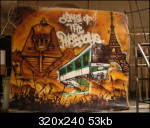
Biodiversity, variety may be
the spice of life
the spice of life
and arguably the mother (code?)
of invention,
too much brain dispersion may become
pathological,
to any over-ambitious
weblogger.
Since opening these posts, I have been asking myself, if it would be wiser to look more at science and engineering definitions in the same way as the RSC's Materials Chemists did in order to get the wider picture of scientific & technological endeavour, and undoubted scientific progress and highlight specifically the Materials Scientists role in this, using for example my house journal Materials World from IOM3 and twenty or so scientific journals published by IOM3 & Maney Press available worldwide, online to members of the Materials Science Institute (IOM3) as a guide ? Suggestion welcome.
Also I have had a constant niggling that really, I ought to be looking first and foremost at the my own “Metallurgy, Materials, Minerals & Mining Sciences & Technologies, Institute IOM3 and their work and interests, with more commitment. The corpus of online member material-Twenty or so dedicated scientific journals to the above mentionned themes- is well deserving of support and commentry within the wider "paysage" of application, engineering and acknowledgement by society in general in an ever increasing interconnected world.
It has bothered me to find a number of Chemistry bloggers but apparently few Metallurgists and Material Scientists whom I would like to reference in blog links etc. OK, exception made of course for all concerning Nano etc. mostly by physicists chemists, electronics & optical engineers & instrumentalists…
(Cheers in passing are to the Institute of Physics (IOP ) for their many journals and especially for their availability "free-for-one-month" online efforts to be used, may I recall, with due respect and acknowledgement of the scientists who agree to this procedure)
That being said, I have decided in “my minds eye” to list the RSC’s list of main themes for their Journal of Materials Chemistry to borrow the expression “my minds eye” from the Scots poet Hugh MacDiarmid, who has also been self-described as "a person where extreme’s meet.”
From The following list of materials chemistry themes has been taken from the RSC journal I believe that will be clear that Materials Chemists and Materials Scientist, will have a lot on their plates in order to meet the high expectations not only of their interdisciplinary peers but also those of Society in general, “Where extremes meet ”!
Journal of Materials Chemistry Review Articles published by the RSC some of which are freely available to non-members.
Further information on the details of “defining materials chemistry” & therefore “the breadth of materials science” is given in the JMCR defined targets for publication. There are three types of reviews specifically materials chemistry orientated:
Applications, Highlights and Feature Articles.
-Applications are interdisciplinary reviews covering the properties and applications of a class of materials. Applications may report new emerging areas of materials application of interest to the materials chemistry community.
-Highlights are short articles that highlight important new developments made in materials chemistry over the past year.
-Feature Articles bring the reader up-to-date with advances in research in a particular field. Key areas of progress and future issues to be addressed are discussed.
From the body of papers published in the Journal of Materials Chemistry throughout 2005-2007, RSC have defined 13 main fields as follows:
1.Biomaterials
Including reviews on drug delivery, implants and bio-mimetic synthesis
2. Composite materials
Including reviews on metal-organic frameworks, organic-inorganic hybrid materials, and biological composites
3. Electronic materials
Including reviews on organic field effect transistors, molecular conductors and conducting polymers
4. Films, layers and coatings
Including reviews on thin film deposition, self-cleaning coatings and porous films
5. Liquid crystals
Including reviews on bent-core liquid crystals, supra-molecular liquid crystals and liquid crystal elastomers
6. Magnetic materials
Including reviews on molecular magnetism, nano-magnetism and magneto-optic materials
7. Materials for energy applications
Including reviews on materials for fuel cells, batteries and solar cells
8. Nanotechnology
Including reviews on anisotropic nanomaterials, carbon nanotubes and applications of nanomaterials
9. Optical materials
Including reviews on electrochromic materials, non-linear optics and fluorescent sensors
10. Polymers and macromolecules
Including reviews on conjugated polymers, stimuli responsive polymers and polymer processing
11. Porous materials
Including reviews on mesoporous silica, porous metals and the applications of porous materials
12. Solid state inorganic materials
Including reviews on layered double hydroxides, oxides and crystallography
13. Theoretical Including reviews on theoretical studies involving nanomaterials, clays and biominerals
Rapid advance in fundamental understanding, measurement and manipulation tooling at minute dimension, better known the general public as "all things Nano-" (10^-9) the predominantly "bottom-up approach of the materials chemist-scientists harbours great expectations.







No comments:
Post a Comment